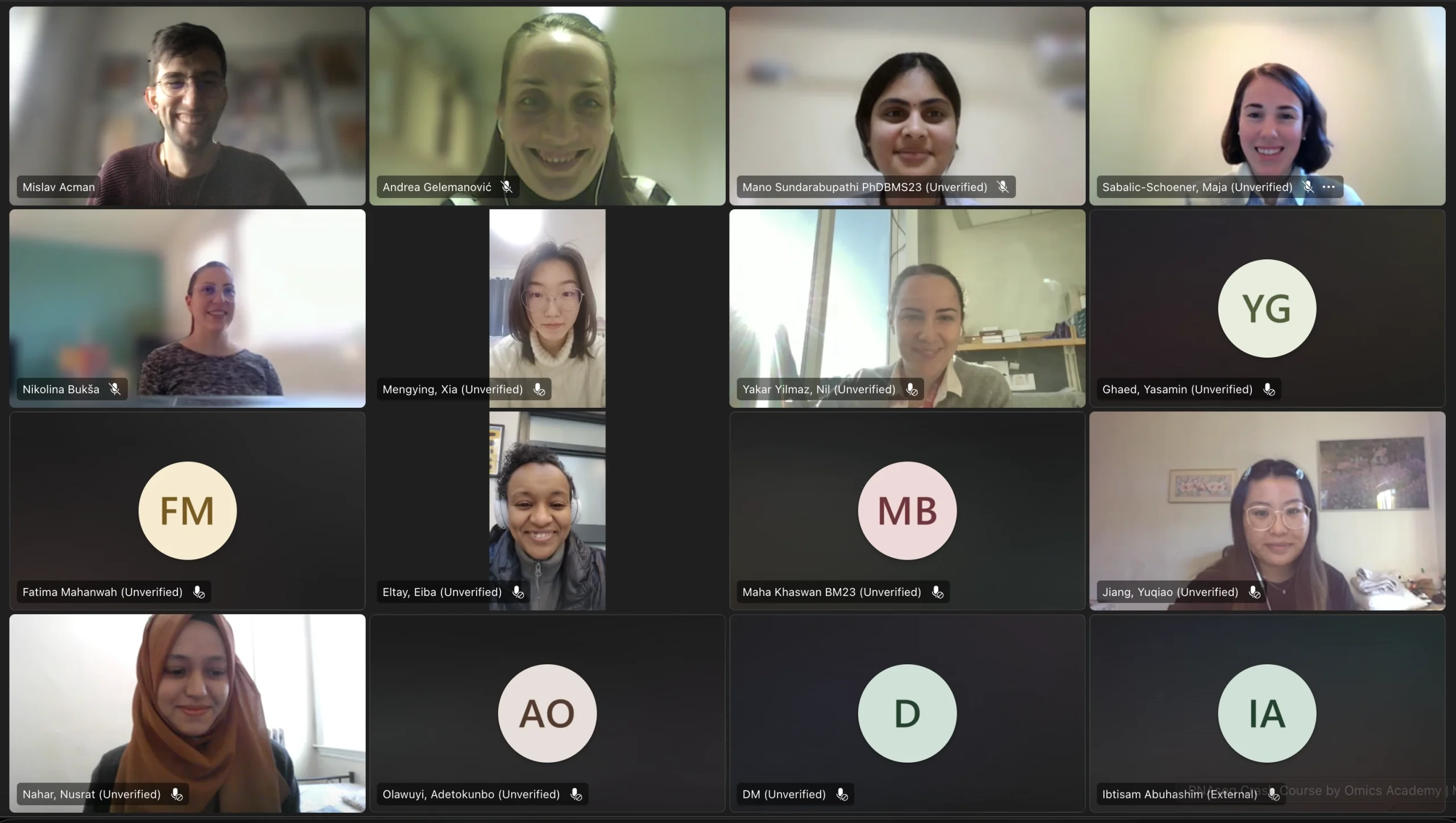Table of Contents
The Growing Importance of Bioinformatics Training
Omics Academy seeks to address the gap between wet-lab expertise and data analysis skills by equipping researchers with the competencies required to navigate and extract insights from sequencing data. Our mission is to promote understanding, proficiency, and scientific rigor through structured, skill-oriented education in bioinformatics.
With the rapid advancement of omics technologies, the capacity to analyze and interpret high-throughput data has become a critical skill in biological and biomedical research. Despite this growing demand, many researchers, from undergraduate students to senior investigators, find themselves challenged by the computational and statistical complexities involved in data analysis. The use of command-line tools, specialized software environments, and programming languages often creates barriers to entry.
A Crash Course Oriented Toward Applied Learning
Earlier this year, Omics Academy launched its first fully online, intensive two-week course in RNA sequencing analysis. The course attracted a diverse cohort of participants, including students from the life sciences, early-career researchers, and established investigators seeking to refine their data analysis skills or explore novel methodologies.
The course was designed to emphasize both accessibility and practical relevance. Each instructional week included scheduled lectures complemented by guided practical sessions. One day each week was reserved for independent work, providing time for reflection and individual consolidation of learning.
To tailor the course effectively, participants completed a brief survey prior to enrollment. Responses were used to adjust the pace of lectures and to organize participants into smaller subgroups based on their prior experience with bioinformatics. This structure enabled personalized support and fostered an inclusive learning environment in which participants could engage with instructors and peers without hesitation.

Explore available courses
Curriculum Overview: From Bulk to Single-Cell Transcriptomics
The curriculum of the first Omics Academy followed a progressive structure, beginning with foundational concepts in transcriptomics and culminating in an introduction to advanced applications in single-cell and integrative analysis. Daily sessions balanced theoretical instruction with practical implementation using widely adopted platforms such as Galaxy and R, along with specialized packages including DESeq2, limma, and Seurat.
Academy Week 1: Foundational Principles and Bulk RNA-seq Analysis
- Overview of RNA sequencing technologies, sequencing platforms, and experimental design
- Preprocessing of sequencing data using the Galaxy platform
- Quality control, sequence alignment, and quantification of transcript abundance
- Introduction to the R programming environment and basic scripting for RNA sequencing analysis
- Theory and implementation of differential gene expression analysis using DESeq2 or limma
Academy Week 2: Biological Interpretation and Single-Cell Applications
- Functional enrichment analysis and interpretation of gene expression signatures
- Navigation and use of public bioinformatics databases and repositories
- Introduction to single-cell RNA sequencing methodologies
- Preprocessing of single-cell data within the Galaxy environment
- Comprehensive analysis of single-cell data using Seurat in R
- Overview of advanced topics including spatial transcriptomics, meta-analysis, and integrative multi-omics
Theoretical content was reinforced through direct application to real-world data. For instance, after learning about normalization and batch correction, participants performed these steps using curated datasets. Instructors were available throughout the sessions to provide technical support and methodological guidance.
Interactive, Flexible and Supportive Learning
The teaching model adopted by Omics Academy is grounded in the principles of active learning. Course delivery emphasizes:
- Interaction: Sessions are structured to promote inquiry, discussion, and critical engagement with the material.
- Inclusion: Instruction is adapted to the background and prior knowledge of participants, as assessed through pre-course surveys.
- Support: Practical sessions are conducted in small groups, facilitating individualized feedback and troubleshooting.
- Flexibility: The fully remote format enables global participation and accommodates varied learning paces and time zones.
Participants are not only introduced to analytical tools but are also encouraged to develop modular workflows that can be directly applied to their research. Moreover, the participants were encouraged to work with their own data, to discuss results, and ask questions to the lecturers and their peers.
What Participants Gained from Omics Academy
Upon completion of the course, participants demonstrated:
- Proficiency in core RNA sequencing workflows, from preprocessing of raw data to biological interpretation
- Practical experience with open-source tools and bioinformatics pipelines implemented in R
- Familiarity with both bulk and single-cell transcriptomic analysis
- The ability to access, query, and utilize public resources for genomic data
Feedback from participants was highly positive, reflecting the course’s effectiveness in bridging theoretical instruction with practical skill development. Based on this success, Omics Academy is actively expanding its educational offerings to encompass additional topics and more adaptable formats.
Our objective remains clear: to provide research communities with structured, scientifically rigorous training that directly addresses the computational challenges posed by modern biological data.


